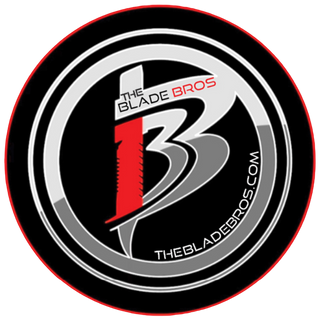A knife is one of mankind's most ancient and indispensable tools, serving a myriad of purposes throughout history. At the heart of every knife lies its blade, the very essence of its functionality and character. In this blog, we will embark on a journey into the diverse world of knife blade types, exploring their unique features, historical significance, and practical applications.
- Straight Edge Blades:
The straight edge blade is the most ubiquitous and recognizable of all blade types. Featuring a continuous, sharp edge from the tip to the base, these blades are the epitome of simplicity and versatility. Commonly found in chef's knives, utility knives, and pocket knives, straight edge blades excel in slicing, chopping, and everyday cutting tasks.
- Serrated Blades:
Serrated blades present a jagged, saw-like edge, adding a unique element of grip and control. Their teeth-like serrations make them highly effective in cutting through tough materials like crusty bread, fibrous vegetables, and ropes. Serrated blades are often employed in bread knives, steak knives, and survival tools, making them indispensable for specific culinary and outdoor tasks.
- Partially Serrated Blades:
The hybrid of both straight and serrated edges, partially serrated blades offer the best of both worlds. They typically feature a straight section at the base, transitioning into serrations near the tip. This combination enhances versatility, catering to a wide range of cutting needs. Partially serrated blades can be found in tactical knives and utility tools.
- Tanto Blades:
With a distinctive angular shape inspired by traditional Japanese swords, the tanto blade is a formidable and practical design. It features a straight edge that abruptly angles towards the tip, creating a sturdy and robust point. Tanto blades are revered for their piercing and thrusting capabilities, making them popular in tactical and self-defense knives.
- Drop Point Blades:
Known for their versatility and user-friendliness, drop point blades boast a convex curve from the spine to the tip, resulting in a strong and controllable point. This design makes them ideal for general cutting tasks, hunting, and outdoor adventures. Drop point blades are commonly found in hunting knives, survival tools, and EDC (Everyday Carry) knives.
- Clip Point Blades:
Characterized by a concave curve near the tip, clip point blades are designed for precision and delicate cutting tasks. This shape provides an acute and sharp point, lending itself well to intricate work. Clip point blades are often featured in pocket knives and tactical tools.
- Spear Point Blades:
A symmetrical design with a sharp point at the centerline defines the spear point blade. These blades excel in piercing and thrusting actions, making them valuable in combat, self-defense, and utility applications. Spear point blades can be found in daggers, throwing knives, and tactical tools.
As we delve into the captivating world of knife blades, we discover the artistry and ingenuity behind their design. Each blade type bears a distinctive character, offering a wide spectrum of functionality to suit various cutting needs. Whether it's the all-purpose straight edge, the rugged serrated blade, or the precision of a tanto or drop point, understanding blade types empowers us to make informed choices in selecting the perfect tool for the task at hand. As we appreciate the craftsmanship and history behind these blades, let us remember that their utility and elegance continue to enrich our lives and shape the course of human progress.
